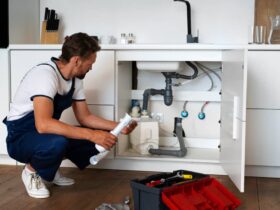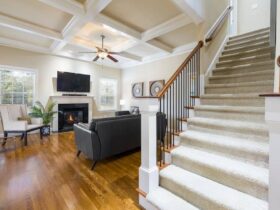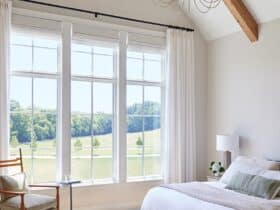It’s your first winter in your new home, and you’re excited about the experience. The nights are drawing in, the weather is getting colder, and you know you have to get your heating system up and running.
However, you soon realize it’s nowhere near as warm as it needs to be. You also see that there are some issues that need fixing as quickly as possible. Where did you go wrong? How can you make your new home comfortable through the cold season? Here are some tips.
Make Sure the Heating System Is Ready
Because you’ll be using the heating system frequently, make sure it’s in good working order before the cold weather sets in. Have a professional do an inspection and make sure the system is running at peak efficiency. You may need to upgrade or fix issues to enable the heating system to cope with the demands of winter.
If you notice any issues such as inefficient heating, a furnace that cycles on and off frequently, or low airflow, call a professional such as Better Choice HVAC to resolve the problem before it affects your comfort level this winter.
Don’t Put Off Repairs
It’s easy to think you can put off repairs until next spring, but this could make your home more uncomfortable and challenging to manage. Problems such as clogged filters, dirty lines, and malfunctioning fans could worsen if you put them off.
Remember that a professional can complete a furnace tune-up and perform preventative maintenance in a matter of hours. Those few hours could save you time and money on expensive repairs later on. Other items to prioritize include:
Roof Repairs
Your roof is one of the most vulnerable parts of your home when winter weather hits hard. It’s subject to ice dams, icicles, high winds, and snow accumulation. Even minimal damage can lead to leaks and other problems. Don’t hesitate to call a professional if you notice any issues.
Plumbing Repairs
The plumbing system is prone to freezing and bursting in winter. To avoid issues, prepare before the coldest temperatures hit. Ensure you insulate pipes prone to freezing by wrapping them in heat tape.
Clear away anything that could cause the water to freeze in your outdoor faucets. Additionally, install isolation valves so that you can switch off individual lines leading to vulnerable areas of your plumbing if they do freeze.
Don’t Forget the Damp
One of the most common reasons heating systems struggle with cold weather is dampness and poor air quality. Ensure your home is well-ventilated, especially if it’s a newer one with less than optimal insulation levels.
If you have any moisture issues, you’ll want to resolve them before they lead to mold, mildew, and rotting. Avoid water leaks and address condensation problems by installing vents to regulate airflow.
Test the Carbon Monoxide and Smoke Detectors
Carbon monoxide hazards are more prevalent in winter because the house is tightly closed, and heating systems are running constantly. This is an excellent time to install more carbon monoxide units if you haven’t already and ensure they’re in good working order. Remember to change the batteries twice a year and have a carbon monoxide detector on each floor of your home.
Remove Tree Branches Around Your Home
Cut back any tree branches close to your roof, windows or doors. Fallen leaves can also be a problem if they land on your roof or the gutters. Additionally, remove old holiday decorations because broken lights or small electrical appliances could short circuit your system.
Also, secure to the ground weak outdoor furniture to avoid damage from strong winds. Loose outdoor lighting is another problem you’ll want to address before the first snowfall. If cables get displaced, they can snap and cause damage to your home.
Winterizing Your Home Keeps It Comfortable
Winterizing a new home can be a challenge, especially if you haven’t had a chance to make any additions or modifications before the cold weather sets in. However, with a bit of preparation and the help of a professional, you can get your home ready for winter in no time. Most importantly, make sure that your new home is well ventilated, clear away any potential blockages, and have the necessary safety features in place.












